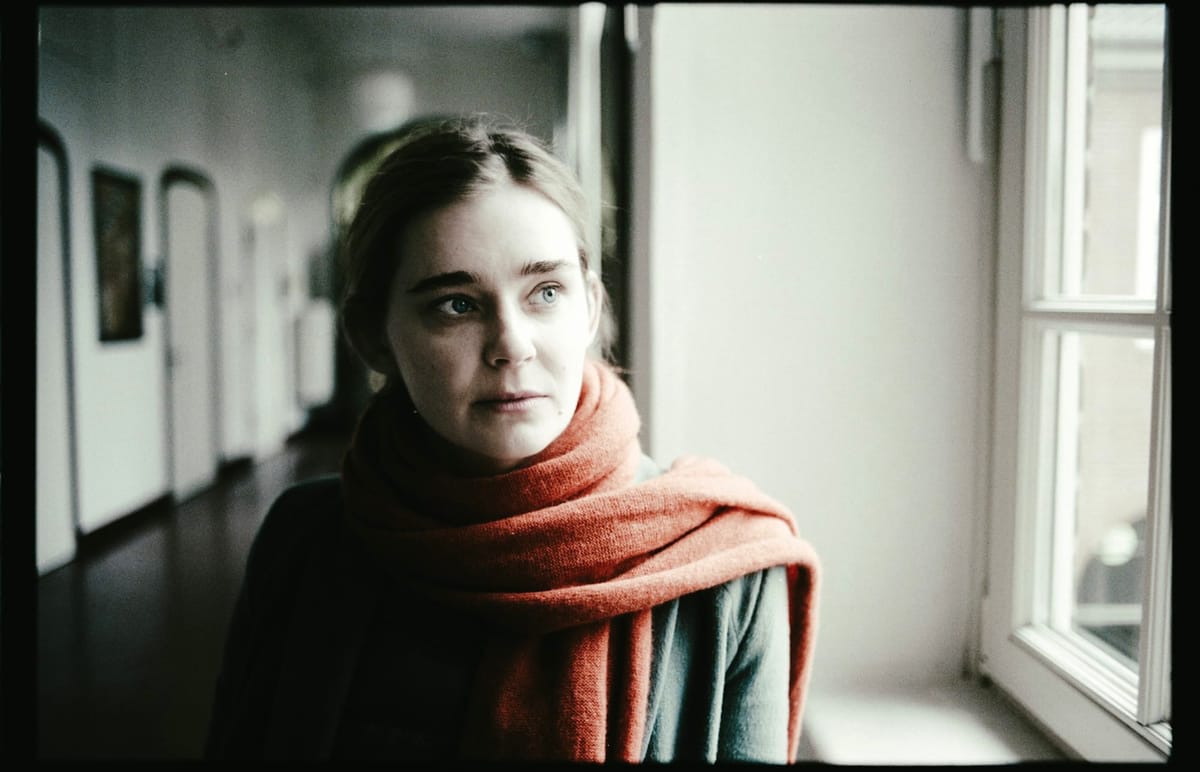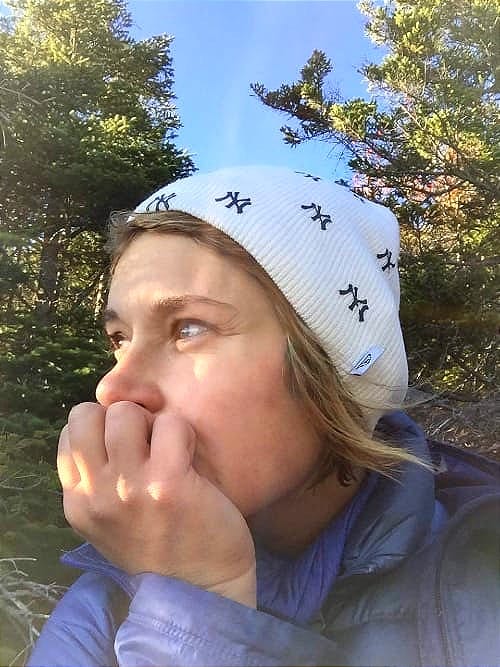Layers, Loss, Liberation - Healing Through Systemic Self Integration
What if healing means letting go of the one you loved the most? A journey through systemic self-integration.

This time, I’m venturing into a new path of healing: Systemic Self-Integration.
A friend of mine, who was trapped in a narcissistic relationship for seven years, trained in this method herself.
So, what is Systemic Self-Integration?
The method views a person as an interplay of internal parts—emotions, thoughts, needs. In sessions, these parts are explored in order to identify, accept, and integrate inner conflicts—for more clarity, stability, and the ability to take action.
The method combines systemic therapy, ego-state work, and integrative approaches.
It reminds me of family constellation work—only here, the focus is on the internal system rather than external relationships.
It might sound strange or complex—especially to those who aren’t familiar with alternative methods. But if you know my blog, you know: on my healing journey from narcissistic abuse, I open myself to everything that crosses my path. That included a remote Reiki session.
You can read about my experience with distance Reiki here.
After the night train from Oslo to Berlin, I arrive at my friend’s rooftop apartment—it looks like a Pinterest dream in beige and gray, full of calm and style. She offers me the shower, and I gratefully accept. I let the hot water wash off the journey, my body relaxing with the scent of her high-end products, and I feel like a homeless person in a luxury hotel. Not entirely inaccurate: I’ve been without a home for a year now. Just not without a roof.
After a short conversation, we begin. We stand facing each other, breathing deeply, tuning in.
“First, we look at the first level,” she says, “allowing emotions to rise.”
In the description to come, I’ll often refer to Lucas as my counterpart, because my friend takes on his inner parts and speaks to me as his representative. It often has a powerful effect—because even without knowing him, she says things that sound exactly like him, which gives me emotional flashbacks.

Level 1 – The Search for Connection with Lucas
“It’s a confrontation,” she explains—the outermost layer, also known as compensation. This is where the strongest imprints show up.
Speaking on Lucas’s behalf, she expresses what she feels in his place. There’s a deep accusation coming from him toward me. That I left him, betrayed him, refused to take responsibility. The words hurt.
I respond, try to explain. As usual. But he clings to his story. To the betrayal. On this level, there’s no possibility of connection.
So far, so familiar. This dynamic mirrors exactly what we used to play out.
She asks if I’m ready to go one layer deeper. I nod.
Level 2 – The Heart Level
Suddenly, she—on his behalf—feels a deep sadness. She says it’s about his mother. Her posture and expression softens, becoming vulnerable. I can see his behaviour in her. But she also senses how he suppresses those feelings with power through achievements and sport. And even here, a real connection can’t happen.
It hits the nail on the head. In the past, he often said that extreme sports and near-death experiences had been his therapy. But in truth, he was trying to prove—to himself and, unconsciously, to his mother—that he was indestructible. But all these unresolved emotions would eventually catch up to him in everyday life, when no mountain was in his way. This was something he never realized or didn’t want to see.
I say that I see his sadness. In response, he/my friend—gets angry. Who am I to say such a thing? To tell him how he feels. And then comes the accusation I am so familiar with: If I see it—why don’t I comfort him? Why don’t I do something?
It swings between rejection and longing. Just like it always did in real life.
We go deeper.

Level 3 – The Inner Child
I’ve written about inner child work before, in my post on books that supported my healing journey.
A quick explanation: we all carry within us a Sun Child (creative, lively) and a Shadow Child (wounded, shaped by childhood trauma). The Shadow Child tends to show up when we’re triggered and often sabotages us in adult life. Working with it can help us break free from old beliefs and lead a freer, happier life.
If you’re unfamiliar with the concept, the next part might sound strange—but it is essential. On the third level, we realize that our inner children—Lucas’s and mine—know each other well and complement one another. No surprise there: we often acted like kids, roughhousing on the floor, laughing in amusement parks. That’s the part I miss most. Our wounds were also similar. It bonded us. Us against the world.
But unconsciously, I had started comforting his inner child—and completely forgot about mine. There was no space for it. He didn’t take care of his, so I stepped in. But no one was there to care for me. My inner child sat alone and sad in the corner.
It became clear: this has to change. Each of us has to take responsibility for ourselves, because two broken houses can’t build one together. Only once both stand strong on their own, can a reunion happen—if it’s even still desired.
But it also became clear that, for Lucas, that wouldn’t work. His sadness is a bottomless pit—no matter how much love you pour in, none of it stays. He wants the system to stay the same: I take care of him, soothe his pain. That was our unspoken agreement. By leaving, I broke that contract.
My friend asks me to say the words: “I am not your mother—you already have one.”But the words feel wrong. In our dynamic, I had already become the mother. He, the abandoned child. I couldn’t see him as a fully grown man—and he didn’t want to be one. That’s the only way the relationship worked for him.I wanted to be his partner—and also his savior. I wanted to give his inner child the love it missed.So when I try to draw a verbal boundary, I don’t believe myself. And neither does he.

Level 4 – The Attachment Layer
I learned early on: love equals suffering. Lucas learned: love equals dominance. A perfect match—when I submitted, he felt loved. The moment I resisted, he felt unloved. Our compatibility was destructive.
Just before we met, he told me he had prayed to God to send him the woman most compatible with him. Then I came along. And yes, we matched—but it was damaging.
Closeness was hard for both of us. I used to run from relationships when they got too close; he disappeared to far-off countries for work. But with him, closeness didn’t scare me. I wanted it. Probably because on some unconscious level, it was reassuring—he’d destroy it anyway before my fear could set in.
We lived in symbiosis. He couldn’t handle beautiful moments between us for long. They were always followed by devaluation and distance. I was either the saint or the whore. He even said I embodied both.
Also known as the Madonna & Whore complex.

I longed for connection at eye level. But he couldn’t allow it—his fear of being hurt again was too great.
Ironically, he often accused me of creating exactly what I feared through my fears. But that’s exactly what he did: afraid of being hurt, he pushed me away—and I left, which hurt him.
A self-fulfilling prophecy. Now he’s once again confirmed in his belief that women can’t be trusted.
In conclusion: it’s about time to meet myself at eye level. To love myself. To reclaim my own worth.
As I leave the house after the session, I walk around as if in a daze. Everything feels foggy, like I’m moving through a cloud. Even though I know the area well, it takes me a while to find my stop. On the train to Leipzig—where I’m cat sitting for a friend for the week—I suddenly feel hot and cold at the same time. Like a caffeine shock. Sure, I barely slept and had coffee on an empty stomach, but it’s more than that, it is a somatic response.
My friend told me she had to throw up after her first session. This kind of work goes—quite literally—through bone and marrow. Or straight through the stomach. Cold sweat runs down my back. I close my eyes, focus on my breathing. An hour later, I wake up: drained. Every step is a struggle. When I arrive in Leipzig, I collapse onto my friend’s couch—and stay there. For an entire week.Like with many types of therapy, things often get worse before they get better. It feels like a massive knot has come undone—and taken my strength with it. But some of the pain has also lifted.
I’ve realized: a real connection with the man I loved so deeply isn’t possible. Not as long as only his rules apply. And under those rules, I don’t exist.
If I choose my life, I have to choose against this bond. As much as it hurts.
What would it look like to finally choose yourself, even if it means walking away?

Be Well,
Vaselisa